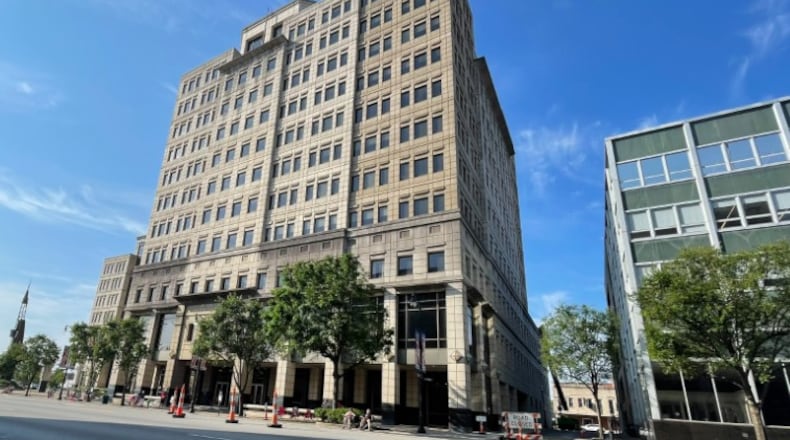The general fund is the main operational fund, but there are a number of entities that rely on outside resources such as state and federal funding, service fees like water and sewer and independent tax levies. All combined, the total tax budget for next year amounts to $497.4 million.
County Administrator Judi Boyko is cautioning the commissioners that if spending and revenue collections continue to grow at its current rate, over the next few years the county’s budget will require carryover to balance.
“Although the 2024 general fund is balanced it is what I consider to be a pivotal budget in that it proposes an escalating ratio of expenses over revenues that is about three times,” Boyko said. “Your expenses are increasing in 2024 at 3.6% while your revenues are only 1.3%.”
Boyko took those ratios out to 2030 and said expenses would be at $150 million and revenues only $130 million, “you would only have 86.7% of expenses that could be covered by the annual revenues,” she said.
This year, the commissioners sanctioned a 3% increase for materials and supplies due to inflation and a 3% hike for merit raises, stating “the majority of the elected offices did comply” except for some union contracts and a 6% increase for health insurance. The county is shopping for new insurance.
The county expects to have a healthy beginning general fund balance of $131.4 million to start next year, which gives the county nearly $242.5 million in available resources. But Boyko is recommending the commissioners keep $90.2 million — about nine months worth of operating expenses — in reserve as a precaution.
Also built into the budget is the $16 million budget stabilization fund and $5 million for capital projects. The commissioners also set aside $15 million in a capital reserve fund last year — that hasn’t been touched yet — to help fund recommendations from the space study designed to right-size the county’s facility footprint.
The county is required to pass a tax budget in the summer but the true spending plan won’t be solidified until December. By then they will have a full year of revenue collections and expenditures for this year, so they can make better projections. The commissioners will also have held budget hearings with other officials to help craft the budget.
Commissioner T.C. Rogers said he believes the county is probably in better fiscal shape than the rest of the state, but they are still impacted by the “weird numbers” the pandemic produced.
“With the revenues and expenses — even though ours are prudent — there aren’t that many years left before we start seeing deficits; that’s that ‘D’ word we never want to hear,” Rogers said. “Part of it is across the country is having problems because of the COVID money which was put in that has skewed normal budgets of operations of government entities.”
The largest general fund engine is sales tax, and they are projecting a $50 million collection for next year. With all of the tax proceeds, property and others, the total collection is anticipated at $69 million.
“Revenues predict a moderately fit economy, we are making some concessions that consumer spending will not quite continue at the rate it’s continued for the last two years,” Boyko said.
Over the past several years billions of dollars have been pumped into the economy, helping governments stay afloat, keeping people in their homes, and providing new but potentially temporary work opportunities. Most of that funding has finally dried up. Commissioner Don Dixon agreed everybody “is trying to navigate the new normal.”
“It’s not an ordinary time, it’s not, we’ve come through COVID and we’ve had to deal with some wage pressures, increases through contract service increases, a lot of that unexpected,” Dixon said. “This is not one of the prettiest pictures I think we’ve seen in two or three years but the good news is we’re prepared to deal with it.”
The largest county outlay of cash is for personnel costs — $80 million is planned for next year. In dire financial times the county has resorted to reducing payroll. There are 1,672 county employees serving nearly 400,000 residents, compared to 2,347 workers in 2011.
Rogers has been saying for a year he wants to make sure the county is the right size in terms of employees for its population size and now and in the future.
He told the Journal-News that currently “the capacity for our government to run efficiently is stretched.” But that doesn’t mean he necessarily advocates adding bodies.
“We need to come up with a model of how big the county government and all of its departments needs to be based upon what we think the population projections are going to be...,” Rogers said. “With technology you can also plan about how much work or services has to be done with your own employees or what can be done with contract services.”
About the Author

